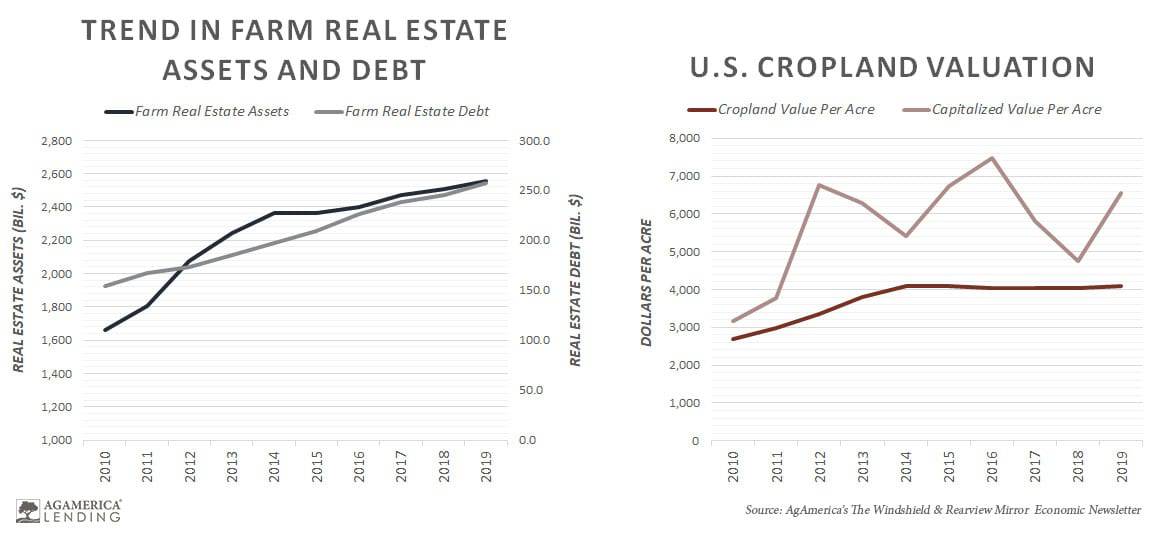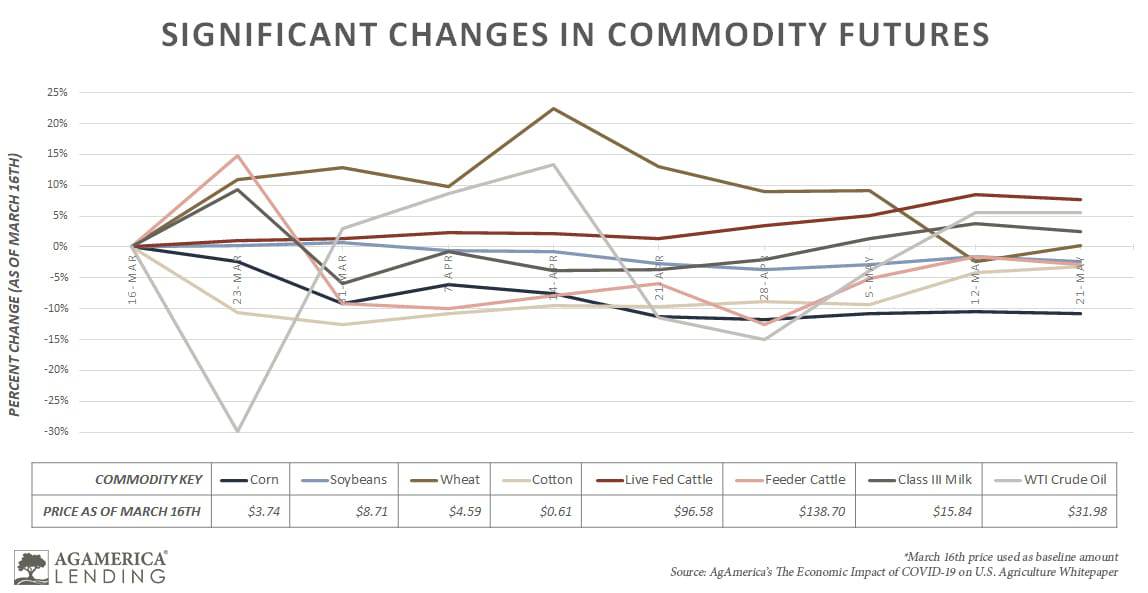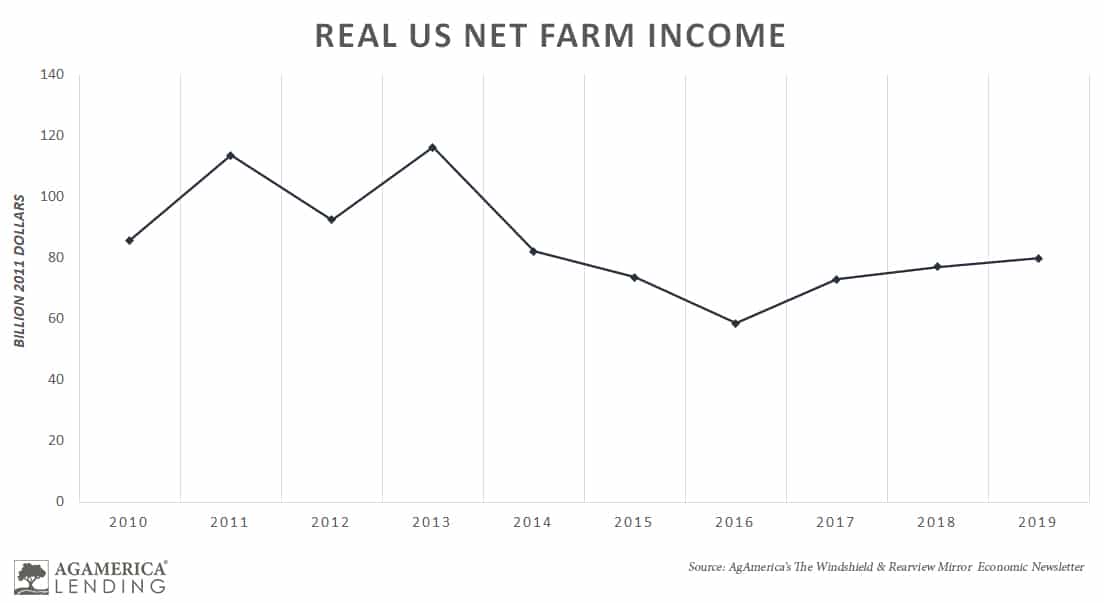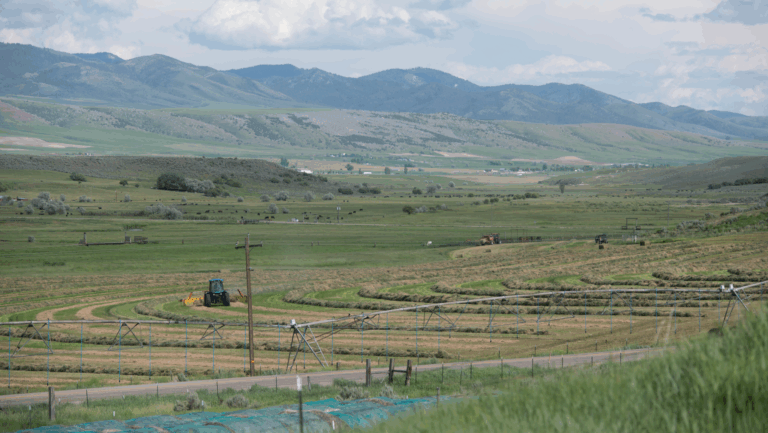U.S. Farm Sector Income and Price Outlook for 2020
AgAmerica’s CEO Shares Insights on how COVID-19 has Impacted U.S. Agriculture
Brian Philpot, President of AgAmerica Lending, recently discussed trends he has seen in both the agriculture and finance sectors with Nasdaq Global Market’s reporter and TradeTalks host, Jill Malandrino. Nasdaq’s TradeTalks is a live broadcast that features “conversations with top industry thought leaders on trends, news, and education.” During this interview, Brian dove into how these industries have begun to move forward since the COVID-19 pandemic emerged and used statistical analyses to address relevant topics such as:
- The growing concern for the debt to asset ratio;
- How farmland values have been impacted;
- Which commodities were hit the hardest; and
- The fiscal response created to assist U.S. agriculture.
The 2023 Farmland Report
Understanding the power of equity is key in helping farmers mitigate financial risk. Download AgAmerica's free land report to unlock market insights from AgAmerica's economic research team.

The 2023 Farmland Report
Understanding the power of equity is key in helping farmers mitigate financial risk. Download AgAmerica's free land report to unlock market insights from AgAmerica's economic research team.
How Changes in Debt to Asset Ratio Affect Farmland Values
Concern is growing in the real estate sector of escalating debt rising as quickly as asset value. Unlike most classes of real estate, agricultural real estate is not reliant on debt. As a land loan lender, AgAmerica focuses on the ag real estate debt to asset ratio, which continues to hover between 10 and 15 percent.
“We see that [U.S. crop land] values that are out there in the market over the last 10 years, while they have risen, have stayed below what the cap rate valuation would otherwise indicate,” Brian explains. “We’re not seeing softening yet.”

The two factors AgAmerica monitors are 1) underlying liquidity and 2) underlying cash flow. Yet despite increasing debt to secure working capital during these volatile times, farmland values are positively correlated and the percentage of asset values has remained stable.
Trends in Commodity Futures Since COVID-19 Began
While the news depicts a generalized negative economic outlook for U.S. agriculture, the COVID-19 impacts have varied based on sector. For example, wheat has seen minimal fluctuation and was excluded in the Coronavirus Food Assistance Program (CFAP), a distribution of direct payments to farmers who experienced substantial losses from the pandemic. Citrus fruits, such as oranges and grapefruits, have actually experienced an uptick in sales as consumers seek sources of vitamin C to boost their immune system.
The most heavily impacted agriculture sectors include meat, corn, and soybeans. Corn is highly dependent on oil and ethanol, which have taken a huge hit from lack of travel. Both corn and soybeans are reliant on the struggling meat industry. In fact, an estimated 70 percent of soybeans grown are used for animal feed. The decline in slaughterhouse production has impacted ranchers along with feed suppliers as they work to keep plants open and product moving.

COVID-19 Impacts on Global Trade and U.S. Food Supply Chain
Experts are also questioning China’s ability to uphold the agreed upon $35 billion in U.S. agriculture purchases this year. Although there have been recent moves towards maintaining this agreement, Chinese purchases of U.S. goods are down 23.5 percent from 2019. The sharp drop in ethanol demand due to business closures for over two months has most impacted Chinese purchases of U.S. energy products.
However, U.S. agriculture is beginning to see an economic rebound as the food supply chain slowly returns to a more normalized state. The decline in oil, gas, and fertilizer prices should lower input costs for farmers but remains yet to be seen. Food price trends during past recessions typically show inelasticity so the fluctuating prices for consumers are unique to this situation. Since the substantial fluctuation is due to a sudden economic shutdown of 50 percent of businesses, the impact of COVID-19 on food prices is expected to be a short-term rather than a long, fundamental issue.
Fiscal Plan to Help U.S. Agriculture Combat Impacts of COVID-19
Although the impact is predicted to be short-term, one thing is clear, a significant fiscal response is needed to ease the losses American farmers and ranchers have experienced.

While farm income has not hit the record low experienced in 2016, the slight rise in farm incomes can greatly be attributed to government payments that offset losses from the ongoing trade war with China. Prior to COVID-19, net farm income was projected to be $92 billion for 2020. The USDA now anticipates this figure to drop by one-third due to activities related to the COVID-19 pandemic.
Some agriculture operations—such as cattle and row crops—will need more government aid than others to avoid an influx in farm bankruptcies. Further aid beyond the $19 billion from the CARES Act would lighten the losses incurred and is currently under discussion in the Senate.

The cattle industry received the most federal aid as they have incurred the most severe losses with aid allocated for crops and dairy following close behind. The pork sector received surprisingly lower portions of aid considering they are facing similar challenges as the cattle industry with supply chain bottlenecks.
AgAmerica’s Continued Commitment to Supporting Our American Farmers and Ranchers
A fiscal response isn’t the only assistance available to farmers and ranchers who are looking to secure capital for their operations. As one of the largest land loan lenders and the only agriculture mortgage REIT in the United States, AgAmerica Lending is deeply rooted in agriculture with a singular focus on farmland loans.
Our boots on the ground approach makes us one of the few agriculture real estate lenders capable of providing land mortgage loans across the nation. From our accelerated loan program to our land loan calculator, we’ve developed a spectrum of customizable loan products and resources to streamline the financing process and make it as simple as possible. AgAmerica will continue providing innovative and creative ag financing solutions for our nation’s farmers and ranchers so that they can continue providing food, fiber, and fuel for the world.






